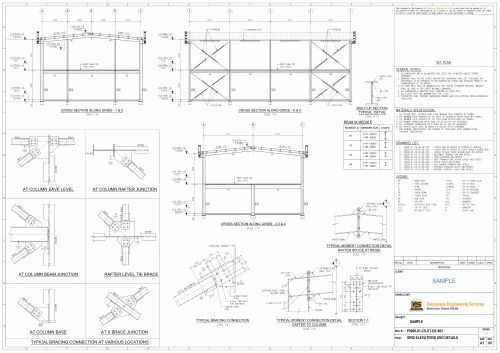PlayStation Evolution: From PS4 Dominance to PS5 Revolution
The gaming landscape transformed dramatically with Sony’s PlayStation dynasty. The PS4 established unprecedented dominance, selling over 117 million units through blockbuster exclusives like God of War and Horizon Zero Dawn. Its accessible architecture, robust online ecosystem, and emphasis on cinematic storytelling redefined console expectations. Yet the seismic shift arrived with the PS5. This powerhouse leveraged cutting-edge NVMe SSD technology, eliminating load times and enabling vast, seamless worlds. Features like haptic feedback in the DualSense controller created unprecedented immersion, making activities like drawing a bowstring or driving on gravel feel tactilely authentic.
Backward compatibility bridged generations, allowing libraries to flourish while new exclusives like Demon’s Souls and Ratchet & Clank: Rift Apart showcased ray tracing and 120fps capabilities. The PS5’s Tempest 3D AudioTech further deepened sensory engagement, creating directional soundscapes crucial for competitive shooters and atmospheric horrors. While supply constraints initially challenged accessibility, Sony’s focus on premium experiences solidified its position. The strategic bifurcation between the standard edition and Digital Edition model also catered to diverse consumer preferences, acknowledging the rising tide of digital storefronts without abandoning physical media enthusiasts.
Developers continue pushing the PS5‘s limits, with titles like Marvel’s Spider-Man 2 demonstrating particle effects and city-scale detail impossible on prior hardware. The console’s architecture, designed for high-speed data streaming, unlocks new gameplay mechanics and visual fidelity, ensuring its relevance throughout the decade. This relentless innovation cycle defines the PlayStation brand’s enduring appeal.
Nintendo Switch & Pokemon: Hybrid Power Meets Global Phenomenon
Nintendo defied conventional wisdom with the Nintendo Switch, a revolutionary hybrid console thriving on versatility. Its unique ability to seamlessly transition between home TV play and portable tablet mode captured a massive audience, surpassing 141 million units sold. This flexibility proved ideal for the social, pick-up-and-play nature of franchises like Mario Kart and Super Smash Bros. Ultimate. However, the Switch’s most potent synergy emerged with the Pokemon franchise. Titles like Pokemon Sword/Shield, Brilliant Diamond/Shining Pearl, and the groundbreaking open-world adventure Pokemon Legends: Arceus demonstrated the system’s capacity to evolve the iconic series.
Pokemon Scarlet and Violet, despite technical controversies, shattered sales records, proving the franchise’s unparalleled drawing power. The Switch became the definitive platform for Pokemon’s mainline RPGs, spin-offs like Pokemon Unite, and even the nostalgic Nintendo Switch Online Game Boy library. This symbiosis extends beyond software. The Switch’s portability perfectly complements Pokemon’s core ethos of collection, trading, and battling on the go, revitalizing local multiplayer interactions reminiscent of the Game Boy era. The console’s success cemented Pokemon’s status not just as a game, but as a pervasive cultural touchstone.
The franchise’s influence permeates merchandise, anime, and critically, the thriving Pokemon Trading Card Game (TCG). Card sets often release alongside new video games, creating a multimedia feedback loop. Iconic Pokemon from Switch titles become chase cards, fueling collector frenzy. This interconnected ecosystem ensures both the Nintendo Switch and the Pokemon brand remain inextricably linked powerhouses.
Unboxing the Hype: Pokemon TCG Booster Box Mania
Parallel to video games, the Pokemon TCG experiences explosive growth, with booster boxes representing the pinnacle of collector and player investment. These sealed boxes, containing multiple packs, offer the thrill of the hunt for rare holographics, powerful Trainer cards, and coveted alternate arts. Recent Japanese sets, renowned for premium card quality and exclusive artworks, drive immense global demand. The Mega Symphonia Booster Box captivated players with its focus on Eevee evolutions and majestic “Sylveon VMAX” alt arts, becoming an instant classic. Similarly, the Mega Brave Booster Box introduced dynamic “Character Rares” featuring popular trainers alongside their signature Pokemon, blending gameplay utility with stunning collectibility.
Sets like PRB-02 (VMAX Climax) exemplify the Japanese premium approach, packing “High Class” subsets with guaranteed hits per box, including sought-after “Character Super Rares” and intricate “Galarian Gallery” cards. The allure lies in the potential payoff – pulling a high-value card like the Moonbreon (Umbreon VMAX Alt Art) can eclipse the box’s cost. However, the market demands vigilance. Securing authentic products from reputable sources is paramount to avoid counterfeits. For enthusiasts seeking the pinnacle of Japanese sets like the Mega Brave Booster Box, trusted retailers like Mega Brave Booster Box ensure genuine sealed product integrity and collector peace of mind.
Investing in booster boxes transcends simple card acquisition. It’s about community participation in set releases, strategic deck-building for competitive play, and preserving sealed products as potential long-term assets. The scarcity of certain chase cards, combined with Pokemon’s evergreen popularity, fuels a vibrant secondary market. Understanding set mechanics, pull rates, and card valuations is crucial. Whether chasing meta-defining cards for tournaments or breathtaking artwork for display, Pokemon TCG booster boxes represent a tangible, strategic, and deeply engaging facet of the global Pokemon obsession.


